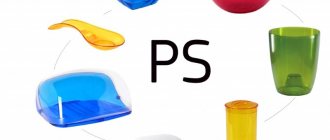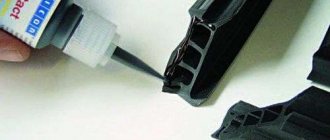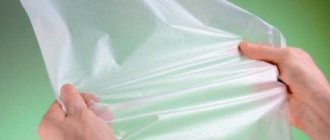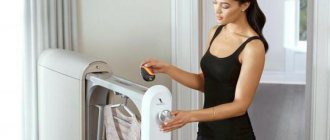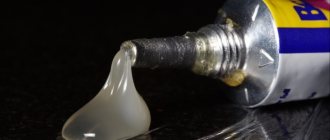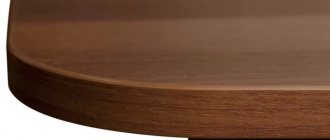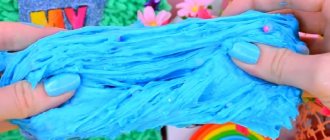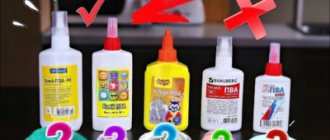Types of glue for plastic
To make it easier to find high-quality glue, you should familiarize yourself with the popular representatives that are most often found in stores and on the market. Correctly selected adhesive will reliably stick to any surface and will last for a maximum period.
It is important to know that the plastic itself has poor adhesion because it has a smooth surface. This greatly affects the quality and reliability of gluing.
In industrial enterprises, special welding is often used, as it allows elements to be connected more reliably and for a long time.
The main principle of the glue is that the surface dissolves and, after a strong blow, is crushed into a monolithic structure. Therefore, any plastic is based on a special solvent, and the composition includes wild polystyrene to ensure viscosity.
Hot melt adhesive for plastic
Bonding with heated plastic rods is not strong. Hot melt adhesives are used to fill chips and voids on plastic surfaces. Due to poor adhesion, thermal bars are not suitable for parts subject to stress. Do not use rods to glue small parts or broken flat panels.
The advantage of this option is that the glue is easily applied to the surface. This option is ideal for small operations.
Contact adhesive for plastic
This type of plastic parts can be easily glued and the adhesion quality will be high. There are two types of contact adhesives: with and without hardener. Applying both types involves the same steps. Glue is applied to one or both parts to be joined. They wait some time for the composition to stabilize, usually 10-15 minutes, then the parts are pressed against each other.
This type of composition is equipped with toxic elements, so work must be carried out in compliance with safety precautions, good ventilation is created, and substances do not enter the skin.
Glue is applied to one or both parts to be joined.
Liquid glue for plastic
Liquid adhesives are the easiest to use and therefore the most popular. Water-based and thinner versions are available. Their operating principle is the natural evaporation of solvents or water, depending on the components used. After the process is completed, hardening occurs and a reliable seam is created.
As a result, they should not be used on sealed objects; evaporation may not occur in this case. Among them, PVA, known to many, stands out, suitable for porous surfaces, with which you can stick plastic films on furniture. Dichloroethane is also of this type, but its use is harmful to health, so it is more often used in industry.
Liquid adhesives are the easiest to use and therefore the most popular.
Reaction glue for plastic
Reactive adhesives are reliable and affordable. Some reactive adhesives require external drying of the parts to be glued, others require the presence of ultraviolet rays, and others require water. All produced reaction adhesives are divided into 2 groups: one-component and two-component. Adhesives include polyesters, epoxy resins and polyurethane.
Edible glue
Such products do not emit toxic substances, which allows them to be used for gluing household items. Edible glue is in great demand among buyers. It does not cause poisoning or allergies, which is important if there are small children at home.
Methods without glue
- Dichloroethane. A toxic component that can dissolve plastic. It must be mixed correctly, then you will get a thick mass, which will serve as a fastening element.
- Heating pad or soldering iron. A method for professionals, since beginners often have difficulty soldering plastic. With a soldering iron, you can directly melt the seams of plastic parts or use plastic with the same markings as structural elements as solder.
- Acetone. The substance first degreases the plastic, cracks and chips are moistened with a brush. The parts are pressed tightly, and acetone is applied again on top. The plastic dissolves a little, creating a soldering effect, and after hardening it reliably holds the parts together.
The best superglues for plastic
The most popular method for gluing broken parts or assembling miniature models is superglue. The name itself speaks of the extraordinary speed of gluing and high bonding strength. Among the huge variety of tubes, experts have identified several products.
Universal Moment Super Second
When quick fixation is needed, Henkel's Super Seconds are a big help. Since this model is universal, it can be used to fasten objects made of plastic, wood, ceramics, porcelain or rubber. It is also suitable for porous products with high absorbency properties. To do this, apply a thin layer of “Super Second Moment” to one of the surfaces of the part, after which you must immediately apply another part. Both parts must be tightened and held for a few seconds. Immediately after this, the fixed elements are ready for further use. It is best to work with gloves and a mask. Because if the product gets on the skin, it will instantly stick. Super Seconds should not be used on utensils that are used for eating or cooking.
One tube contains 3 grams of glue.
Average cost 55 rub.
Advantages:
- instant capture;
- suitable for any material;
- transparent seam;
- price.
Flaws:
- strong smell;
- the product remains in the tube;
- dries quickly.
Second super instant
This cyanoacrylate product is suitable for gluing parts made of any materials. It is designed to work with leather, plastic, porcelain, metal, rubber and cardboard. "Super Flash Second" is waterproof, suitable for both outdoor and indoor use. It will cope with its task in the temperature range from -30 to +50 degrees. And gluing takes only three seconds.
One tube contains 20 grams of the finished product, which is enough for a large amount of work. With a convenient lid, you can easily store leftover glue until your next need.
The average cost is 120 rubles.
Advantages:
- volume;
- dries in 3 seconds;
- Suitable for all materials.
Flaws:
- No.
Super glue "CONTACT"
An excellent two-component option, suitable for gluing products made of ABS, polypropylene, etc. Provides reliable fixation for several years. The seam is almost invisible and does not stand out over time.
Sold at a price of 230 rubles.
Advantages:
- perfectly glues synthetic elements;
- reliability;
- good composition;
- useful marker.
Flaws:
- high price.
BRAUBERG for plastics
An excellent universal product suitable for all types of work. Thanks to the high density of the adhesive, this reduces consumption. It has found application both in creativity and tasks, and in the creation of complex products in laboratories. A special cap allows you to reuse the product several times.
Average price 12 rubles.
Advantages:
- reliable adhesion to the surface;
- compound;
- reusable;
- waterproof.
Flaws:
- setting time: up to 60 seconds.
Henkel Super Moment Maxi
Instant bonding of plastic and plastic is highly appreciated by professionals. Not all adhesives are up to the task, but Henkel's Super Moment Maxi is up to the challenge. It not only fastens quickly, but also securely binds different materials. In addition to polymer parts, the composition can glue metal, cardboard, ceramics and porcelain.
The manufacturer has made soft and comfortable packaging and an elongated tube spout. This made it possible to carefully and economically apply the glue, without the master’s hands being in the solution. The cap is easily removed and, when closed, prevents air from entering the tube.
Average price: 292 rubles. (20 g)
Advantages:
- instant adhesion to the surface;
- economical consumption;
- adhesives and other materials;
- gluing quality.
Flaws:
- not found.
Superglue POWER
High-quality superglue STRENGTH is sold on the domestic market at an affordable price. At the same time, the composition firmly adheres to plastic, plastic, porcelain, glass, leather and wood. Thanks to the convenient tube, the required amount of glue can be applied precisely to the surface of the workpiece.
This has a positive effect on consumption. Experts note the absence of diffusion; the gel does not drip onto other objects or hands. The product is based on ethyl cyanoacrylate with the addition of thickeners. After drying, the adhesive seam becomes transparent, which is important when gluing white or colored materials. The adhesive strength during testing was 175 N.
Average price: 50 rub. (3 g)
Advantages:
- glues quickly;
- convenient to use;
- no pungent odor.
Flaws:
- not often enough.
Economy Express Universal
Universal Chinese superglue Econ Express has an instant effect. It is easy to use, quick to set up, and unpretentious in operation. The composition is suitable for gluing plastic and plastic, metal and paper, rubber and porcelain. Experts note the high strength of the adhesive seam, which can withstand a load of 210 N. The use of glue is quite standard, the surface of the parts is cleaned and degreased, applied to one of the parts, the compression time is 5. -60 seconds.
Users note the low price of the composition, good quality and reliable tailoring. Even under the influence of water, the glued parts do not peel off. Consumers also respond positively to the sealed lid, which prevents air from leaking through. Disadvantages include a strong odor, which can cause headaches when working in a small, unventilated room.
Average price: 33 rubles. (3 g)
Advantages:
- affordable price;
- reliability;
- sealed hood;
- waterproof.
Flaws:
- strong smell.
Permatex Super Glue
Superclue Permatex Super Glue with a gel-like consistency has high adhesive strength to plastic. During comparative tests, experts from the magazine “Behind the Wheel” recognized it as the winner. The destruction of the adhesive seam occurs under a load of 245 N, which significantly exceeds the performance of competitors. In addition, the practicality of using glue when it is necessary to glue thin parts is noted. The product is recommended for gluing hard-to-reach and vertical surfaces. High adhesion strength is observed on non-porous plastics.
Average price: 126 rub. (2 g)
Advantages:
- sets quickly;
- easy to use;
- transparent seam;
- economical consumption.
Flaws:
- No.
Types of glue for plastic
Knowing about the types of glue will help you repair a broken plastic item. Many options for adhesives have been developed just for plastic. They can all be divided into several groups:
- thermal - adhesive for plastic that requires high-temperature heating;
- contact - a composition that can firmly connect without additional means;
- liquid – suitable for gluing lightly loaded parts;
- reactionary - a substance that will perfectly connect two plastic objects.
To understand how to glue plastic, you need to understand the above types in more detail.
Hot melt adhesive
This type of glue does not have the highest adhesion. It consists of rods with a diameter of up to 12 mm. Under the influence of a temperature of 100 - 120 degrees, it passes from the solid phase to the liquid phase. Then he can connect the broken parts.
To use it, you need a special gun, which makes its use more accurate and comfortable. When purchasing rods, it is important to know what material will be repaired, because they are divided into several types. If you make a mistake, you won’t be able to produce high-quality gluing.
Contact
A caustic two-component composition that can firmly seal any plastic. When applied, it is absorbed into the top layer of plastic. Therefore, thin parts may be slightly deformed.
To use it, you need to prepare. It is important to maintain work safety. Therefore, they wear gloves, goggles and a respirator. Then the two components are mixed and applied to the bonding surface. You need to wait some time indicated on the package and firmly press one surface to the other for a few seconds. After the solvent evaporates, the plastic item will be perfectly repaired.
Due to its caustic properties, it is not recommended for use in toys, dishes and in medical institutions.
Liquid
Perhaps the easiest glue to use, therefore it is often used in everyday life. This is a one-component composition that is created on the basis of acrylic, rubber or polyurethane. It can be purchased in tubes for manual application or for use in a special gun.
Acrylics are more often used in cases where one of the bonding surfaces absorbs moisture. Therefore, they can be used to quite firmly connect other materials to plastic. Rubber and polyurethane adhesives do not require this.
To use them, it is enough to apply the composition to one of the gluing surfaces and press the other part as firmly as possible for 10 - 15 seconds. According to manufacturers, the strength of the bonding depends on the strength of the initial pressing.
Reactionary
Chemically active one-component or two-component formulations that act at the molecular level. Before work, you need to protect yourself with gloves, a respirator and goggles. If the glue consists of two components, then you need to mix them, but not completely, but to obtain the required volume for work. Apply to both bonding surfaces. You will have to wait up to 10 minutes for the glue to react with the top layer of plastic. After time, firmly connect the two surfaces.
These compositions are characterized by high adhesive strength. Therefore, they are often used in places that are under high dynamic loads.
The best waterproof adhesives
Waterproof compounds are used to join parts that are exposed to moisture. For example, this glue is used to connect pipes made of PVC and other plastic materials in the bathroom or kitchen.
Moment Crystal
This clear adhesive is resistant to moisture, dilute acids and low temperatures. It can be used in construction and repair work, as well as in embroidery. It can be used for gluing metal parts, plastic products, as well as plexiglass, polystyrene, soft and hard PVC, and is also suitable for processing glass, rubber, cardboard and other materials.
When working with Moment Crystal, it is desirable that the room is ventilated and there are no children or animals nearby. This is necessary due to the unpleasant odor this product has. In addition, gloves and a respiratory mask must be used while working. Opened adhesive should be stored in a dry and warm place, away from fire and heating devices.
Because it can easily ignite. In addition, if the product was transported or stored in a cold place, you must wait until it “reaches” room temperature before starting work. When using Moment Crystal, make sure products are dry and clean.
After this, apply the product to both parts of the product and connect them together. After 15 minutes, squeeze them well. The glued product will be ready for use within a day.
Volume “Moment Crystal” 30 ml. Use at temperatures not lower than +18 degrees.
Average cost 90 rub.
Advantages:
- resistant to frost, moisture and diluted acids;
- works with any material;
- comfortable tube;
- price.
Flaws:
- dries quickly after opening.
UNU Allplast
The basis of this product is acrylic. UNU Allplas is suitable for working with plastics based on synthetic resins. This product can be used both at home and not at work. It is often used in construction and repair work, as well as in embroidery for attaching decorative elements. In addition to plastic, UNU Allplas can glue glass, ceramics, wood and other materials.
To glue two pieces together, apply a small amount of glue to one surface and immediately attach the other piece. The connection will be tight but flexible. If the product has a porous structure, first apply the first layer of the product and let it dry for a couple of minutes. After this, a second layer is applied to one of the parts and immediately connected to the other. Maximum adhesion strength will be achieved within 24 hours.
UNU Allplas volume is 33 ml.
Average cost 205 rub.
Advantages:
- resistant to water, acids, gasoline and oils;
- not afraid of high and low temperatures;
- Suitable for working with any type of plastic.
Flaws:
- No.
Moment Plastic
Contact adhesive is designed for gluing soft and hard PVC, polystyrene, plexiglass and some other types of polymers. Not suitable for use with polyethylene, teflon and polypropylene. The composition reliably connects plastic objects, maintaining its properties when exposed to moisture and low temperatures (it has heat resistance in the range of -40... + 70 degrees).
Not afraid of exposure to diluted acids and alkalis. Thanks to transparency, the joining of parts becomes almost invisible. Aging resistance guarantees a long service life of the repaired product. Please note that the adhesive is not intended for use with items in contact with food.
Moment Plastic is applied to both pre-cleaned and dried surfaces to be bonded (to improve adhesion, it is recommended to sand and degrease them). Parts with the applied composition must be kept at room temperature for about 5... 10 minutes. Subsequently, objects can be connected by using force. The final bond strength depends on the pressure applied. Press the pieces together for a few seconds. You need to join the polymers carefully, since you won’t be able to correct the seam later. Since the adhesive contains toxic components, contact with skin must be avoided.
Advantages:
- high-quality bonding of plastic;
- transparency;
- affordable price;
- easy filling of cracks and chips;
- quick drying;
- water resistance.
Flaws:
- when exposed to high temperatures, there is a deterioration in the strength of the connection;
- toxicity.
UNU Creative
UNU Creative is a two-component epoxy adhesive. Suitable for working with any materials, including plastic, glass, wood, rubber, concrete, etc. The adhesive joint will be completely transparent and also resistant to stress and exposure to water and ultraviolet rays. It will be an excellent assistant in embroidery. It can fill holes and grooves, so it can be used to hold parts with uneven surfaces.
Before work, the bonded surfaces must be cleaned and degreased. When working with metal, it will need to be sanded. After this, you should start mixing the glue. You can do this in the cup provided or use a glass bowl. Both components must be in equal quantities. Mix thoroughly, the better the components are mixed, the better the connection will be. Once the mixture is ready, it will need to be applied to objects and pressed against each other. This should be left for 30 minutes. After an hour, the product will be ready for use, but complete drying will take about 12 hours.
The package contains two 15 ml tubes.
Average cost 485 rub.
Advantages:
- stick securely;
- suitable for any material;
- resistant to water, frost, acids and alkalis;
- the ability to add additional materials to the glue (sawdust, wood flour) and expand the scope of its application.
Flaws:
- does not bind thermoplastics.
Fortress Instant results
The multifunctional composition is suitable for fastening not only polymer materials, but also products made of wood, porcelain, leather, rubber, paper or metal.
The 3ml tube has a convenient embossed cap that helps break through the protective membrane. Additional protective cardboard packaging with a transparent “window” is provided. The container contains complete information about the product and how to use it.
Construction adhesive is made on a cyanoacrylate base. On average, he catches in one minute. However, for best results, the surfaces to be bonded must be thoroughly dried.
The advantages of the composition of the Chinese manufacturer are transparency, stable results and resistance of the bonded surfaces to moisture. This is the opinion of consumers who purchased the product. However, the consistency here is quite liquid, which can make work difficult, and the pungent smell cannot be considered beneficial.
Advantages:
- glue several surfaces;
- dries in 60 seconds;
- not so expensive;
- convenient packaging;
- moisture resistant.
Flaws:
- strong smell;
- very liquid.
SinTex glue
Quick-drying all-purpose adhesive for home use. Adheres tightly to plastic and other materials. Available in spray bottles for convenient and economical application. Not afraid of water and extreme temperatures. Has a transparent color.
Advantages:
- glues different surfaces.
- dries quickly.
- convenient packaging.
- economical consumption.
Flaws:
- strong smell.
New SGU-450
Powerful spray adhesive for plastic, leather, glass, rubber, leather and fabric. After spraying, a thin layer is applied to the surface, after drying it remains unnoticed. It has a high level of moisture resistance, which allows it to be used in basements, kitchens, showers, and bathrooms.
Advantages:
- high-quality gluing;
- works with any material;
- comfortable tube;
- waterproof.
Flaws:
- strong smell.
STAYER BlackPRO WATERPROOF
One of the best waterproof representatives. The product is able to work with all materials, providing a reliable and durable connection. For more effective adhesion, it is important to apply the fluid at a temperature of +10 degrees.
The average price is 194 rubles.
Advantages:
- reliability;
- universal;
- popular manufacturer;
- per package 280 ml.
Flaws:
- not found.
Adhesive for polyurethane
Polyurethane is more often found in foamed form. Moldings and decorative elements are made from it. There are special formulations for these products. Sometimes there are products made from sheet or cast polyurethane. Most two-component reactive compounds can be used for these, but check the description for compatibility with the type of plastic.
Polyurethanes can have an elastic or rigid seam
There are few options that are designed specifically for this type of polymer. One of them is adhesive for polyurethane “Uran”. It can be used to glue polyurethane to other plastics (PVC, ABC). Suitable for repairing artificial leather shoes. Forms an elastic seam and can be glued cold or hot.
This composition can be used to glue skin to plastic. And not only
When gluing cold, coat both surfaces to be glued with glue, leave for 1-2 minutes, apply and press for 5-6 hours. When hot gluing, apply glue to both parts, heat to 90°C, press for 1-2 minutes. Can be used after 4 hours. Most often used for repairing shoes, it can be used for repairing air mattresses, circles, slides, tents and other similar products.
If you need a solid, rigid seam, look among the universal compounds. This can be installation or structural adhesive. Most often it is reaction based on polyurethane. A couple of examples:
- SikaBond-T2. One-component polyurethane adhesive that adheres well to various types of materials, both smooth and porous. Adheres to all types of plastic, including polyurethane.
Any of them are suitable for gluing automotive plastic. Difference in hardening speed - Wurth replast easy . Two-component polyurethane adhesive. Used for repairing plastic parts in cars, trucks, motorcycles (autoplastics). Suitable for gluing bumpers, headlights, radiator grilles, trim parts. Resistant to many types of solvents, works with almost all types of plastics.
There are many polyurethane-based adhesives. They can have different properties - transparent and opaque, waterproofing, with fixation to porous and smooth substrates (including anodized aluminum, brick, etc.). Since the base of the composition is polyurethane, it adheres 100% to the plastic of the same name. You just need to select the required properties of the seam - elastic or rigid, waterproof or acid-resistant, with increased resistance to high temperatures or other properties. There are really a lot of compositions, so there is plenty to choose from.
The best frost-resistant adhesives for plastic
Sometimes it is necessary to glue at subzero temperatures, otherwise the product will be used in the cold. In such situations, you should use a special glue designed for low temperatures.
Epoxy adhesive for plastic PERMATEX Plastic Welder 84115 0.025 l
This is a two-component plastic adhesive that must be mixed before use. It is made in the UK, has a high price, but can be used at temperatures from -50 to +121 degrees, that is, even direct heating will not destroy it. In addition, this glue is resistant to water and chemicals. It sets in 5 minutes but takes about 24 hours to dry completely. Supplied in a 25 ml bottle. The composition expands, filling gaps up to 3.2 mm deep. This heat resistant adhesive is suitable for PVC, acrylic, vinyl, ceramics, plastic. Not recommended for polyethylene and polypropylene.
Advantages:
- withstands very low and high temperatures;
- sets quickly;
- not afraid of moisture;
- not afraid of chemical influences;
- he can fill in the gaps;
- Suitable for a wide range of materials.
Flaws:
- takes a long time to dry;
- expensive;
- requires preparation.
Loctite glue
The high cost of this glue is due to its ability to form great adhesion. The liquid structure of the sticky mass ensures deep penetration into the pore structure and small defects.
- Crystallization of the components occurs within 5 seconds after applying a thin layer.
- The advantage of this brand is its ability to withstand sudden temperature changes from -40 to 100;
Advantages:
- high-quality gluing;
- dries quickly;
- convenient packaging;
- frost-resistant.
Flaws:
- high price.
Which lubricants are food grade?
Lubricants of various consistencies, sealants and other materials used in the food industry to prevent wear, leaks, and corrosion must be approved by the international non-profit organization NSF (The National Sanitation Foundation). The latter's activities are aimed at protecting the environment, preserving human health, and monitoring the safety of food and water. If NSF issues approval of any materials for food production, it means that they do not contain substances that, when in contact with consumer products, can cause chemical contamination and harm humans.
There are several types of food tolerances.
| Food approval | Characteristic |
| H1 | Most often, it is the NSF H1 approval that can be seen in the lubricant data sheet. This means that the composition is safe, but its content in the finished product should not exceed 0.001% |
| H2 | The presence of such a permit guarantees the absence of highly toxic elements in the lubricant, including lead, cadmium, nickel, antimony, however, the lubricant getting into products even in minimal quantities must be excluded |
| H3 | The abbreviation with "H3" indicates that the material is soluble in water |
| 3H | "3H" means that the lubricant can be used as a release agent for grills, pans and other elements of food equipment that have direct contact with food. |
| A7 | The group includes cleaners and polishes approved for use in food production |
Food-grade lubricants and sealants are obtained by thoroughly purifying base oils from all kinds of impurities.
Cold welding
The peculiarity of this type of glue is that it includes two components and, after mixing, turns into a practically indestructible composition. The best option is to securely glue the plastic.
Aviora Monolith 403-218 45 g
This two-part epoxy adhesive is an excellent option for bonding a variety of materials, as well as for filling cracks or holes. It is not afraid of high temperatures, sets quickly and is very economical. The finished composition has good viscosity, so it is convenient to apply it to the gluing site or as plaster. After hardening, it turns into a durable material that is not afraid even of mechanical stress.
Advantages:
- cheap;
- good viscosity;
- easy to use;
- very durable after polymerization;
- not afraid of moisture;
- not afraid of high temperatures.
Flaws:
- missing.
Cold welding adhesive Poxipol 10 minutes transparent 00269 0.07l
Cold welding from Uruguay with two components that must be mixed before use. Among the advantages of the composition is resistance to water and chemical influences. Can be used at temperatures up to 120 degrees, sets in 10 minutes. It can bond plastic, glass, concrete, porcelain, stone and wood.
Advantages:
- fast adhesion;
- transparent;
- easily grasped even by perfectly flat objects;
- mixes easily;
- resistant to shock loads.
Flaws:
- sometimes there are fakes in which the composition turns out yellow;
- high price.
Product examples
What can be found on the shelves of construction and hardware stores:
- “ Moment plastic” is a type of glue that connects many types of plastics. It has a transparent base, sets quickly and forms a strong connection. This is a waterproof and heat-resistant composition. However, it contains toxic substances and is not used to repair products that come into contact with food or skin.
- “Super Moment ” - second glue.
- 3M Scotch-Weld PR100 is an epoxy adhesive that hardens in 20 seconds. Simple and easy to use composition.
- Cosmofen is a brand that offers several types of glue for plastic. Among them are adhesive-sealant for transparent plastic, Plus composition for PVC, PMMA - adhesive for polystyrene and acrylic surfaces.
- " Second " - superglue for hard plastics. One of the fastest acting compounds.
- For minor car repairs, special automotive plastic sealants are sold.
- Rexant is a hot melt adhesive, available in the form of rods. It can be transparent or colored (to disguise joints if colored parts are connected).
- Akfix HT300 is a heat- and water-resistant composition. Withstands temperatures up to +300 degrees. This adhesive sealant contains silicone. It reacts to humid air.
This is not the entire range that the adhesive industry offers. It cannot be said that any glue is better or worse. Each composition is designed for specific types of work. Read the instructions carefully and follow all recommendations.
Rexant and Akfix HT300
The best heat-resistant adhesives for plastic
Heat-resistant plastic adhesive is required when exposed to high temperatures, this property is due to the composition of the material. There are three brands of plastic glue that can withstand high temperatures, although there are actually more.
Moment Gold Standard
This versatile adhesive from Henkel is suitable for indoor and outdoor use. It is resistant to water, chemicals, and can withstand low and high temperatures. This product is solvent based. Apply Moment Gold Standard to both surfaces of the parts, then wait and seal. Maximum strength will be achieved one day after work. After this, you can proceed to further processing of parts.
The average cost is 155 rubles.
Advantages:
- resistant to chemical attack;
- can be used in the temperature range from -40 to +110 degrees;
- not afraid of exposure to water.
Flaws:
- not suitable for working with polyethylene and polypropylene.
Second epoxy plasticine
This product is a quick-setting mass that can bond products even under water. “Second Plasticine Epoxy” is suitable for working with plastic, metal, glass and ceramics. After hardening, a durable seam is formed that can withstand operating temperatures from -50 to +130 degrees. It is also chemical resistant. Excess dried seam can be sanded off. In addition, “Second Epoxy Plasticine” is used to fill cracks and seal products. The product completely hardens in 5 minutes.
The average cost is 215 rubles.
Advantages:
- sets quickly;
- suitable for many materials;
- withstands low and high temperatures;
- Resistant to chemical attack.
Flaws:
- not suitable for working with polypropylene and polyethylene.
Moment 88 Extra strong
If you need a very strong connection that is not afraid of water, frost, high temperatures, and is also resistant to aging, then “Moment 88 Extra Strong” will be an excellent option to solve this problem. With its help, you can reliably connect parts made of plastic, metal, ceramics, wood and even concrete. It will take 24 hours to fully cure. To strengthen the bond, the manufacturer recommends cleaning them with sandpaper before work and then degreasing them. The product is applied to both surfaces of the parts, after which you need to wait about 10 minutes and then connect them. The strength of the connection will depend on the force applied during the connection.
The average cost is 150 rubles.
Advantages:
- suitable for use in the temperature range from -40 to +110 degrees;
- works with any material;
- waterproof.
Flaws:
- not suitable for working with polyethylene, polystyrene, polypropylene;
- not suitable for dishes in contact with food.
Mastix MS 0115
A quality product designed to provide a tight connection and sealing of products operating at temperatures up to 250 degrees. Production takes place on the territory of the Russian Federation. With the help of this glue, a person can easily fasten any plastic part. Sold in standard packaging, weight - 55 grams.
Average price 200 rub.
Advantages:
- good composition;
- strong adhesion;
- does not collapse over time;
- universal application.
Flaws:
- not found.
ABRO EC-520
Two-component adhesive is ideal for joining ceramic, wood, metal and plastic products. Polymerization occurs 4 minutes after application. The product is completely transparent and does not change color after prolonged use and exposure to sunlight.
Production is entrusted to a well-known brand that has proven itself in the construction, home and automotive sectors. This is one of the best products, which has no analogues on the market. The characteristics fully correspond to the description presented on the official website.
Average price 170 rub.
Advantages:
- unlimited validity period subject to operating conditions;
- popular brand;
- guarantees a long-lasting connection;
- polymerization speed - 4 minutes.
Flaws:
- not found.
PERMATEX 147 grams
Rugged, American-made model designed for professional use. Has high resistance to high temperatures. Resistant to solvents, kerosene, antifreeze.
The connection is tight and can withstand sudden temperature changes. The decal is designed for use in a car, but it can also be used at home.
Average price 510 rub.
PERMATEX 147 grams
Advantages:
- duration;
- reliability;
- does not dissolve under the influence of solvents;
- it does not crack due to sudden temperature changes.
Flaws:
- not found.
UHU Kraft, 6 gr.
Excellent adhesive based on polyurethane rubber. It has a high membership rate. Can work not only with plastic, but also with products made of metal, wood, felt, etc. Provides a strong connection even in places with high humidity. Withstands negative temperatures down to -30 degrees. Not sensitive to acids, alkalis, alcohol, UV rays.
Sold at a price of 102 rubles per 6 grams.
Advantages:
- popular brand;
- quality composition;
- reliable connection;
- good heat resistance.
Flaws:
- high price.
Characteristics
To seal joints, the adhesive-sealant must have the following characteristics:
- High adhesion. Adhesion to treated surfaces helps prevent corrosion and increase service intervals. The sealant must adhere firmly to the surface without interacting with it. Otherwise, the intersecting areas may swell, become deformed and become unusable. The optimal choice is a universal sealant suitable for use with metal, plastics, ceramics and other surfaces.
- Heat resistance, ability to withstand aggressive environmental factors.
- Viscosity and plasticity. The density of the composition is indicated by the NLGI indicator. The scale has 9 classes of grease - from the most liquid (000) to paraffin-like (6). Sealants correspond to indicator 2...3. This viscosity allows the composition to easily enter the gaps without leaking.
- Freezing speed. The optimal “setting” speed for the composition is from 2 hours, because if the seam or joint is in a hard-to-reach place, it is possible that drips and unevenness will arise during the work, and excess sealant will have to be removed. If it hardens quickly, it will not be possible to correct errors. A quickly hardening adhesive-sealant is needed only when working in extremely unfavorable conditions, when intense exposure to an aggressive environment can damage the structure of the composition.
Each of the parameters must be taken into account, taking into account the specifics of production.
Epoxy resin
If something needs to be glued together for years, epoxy resin is the best option. And regardless of the brand chosen, each of them shows excellent gluing results. The hardeners contained in epoxy resin are resistant to all types of influence, including acids. Many craftsmen also make jewelry from epoxy resin. They place a flower or any other object in a mold and fill it with resin. The resulting pendant can faithfully serve its owner for many years.
Which glue is better
I most often find myself repairing cracked or broken power tool housings. This is a durable, very hard and rigid plastic that must withstand heat, vibration, and mechanical stress. And time for repairs is always limited. For such purposes, I always keep quick-drying superglue or all-purpose glue for metal and plastic. And what’s interesting is that the following compositions turned out to be the most reliable:
- Super glue-gel Permatex 82190, made in Taiwan;
Source zr.ru
- Ekon Express - Chinese universal second glue;
Source zr.ru
- Alteco 110 made in Singapore, photo is above.
But the US DoneDeal, our Russian Felix, as well as the universal SuperMoment, which is also considered ours, but is produced in Ireland, showed much worse results.
For creating elastic seams, I found the best Russian paste glue 88 Luxe, which is often called shoe or shoe glue.
Source prom.st
How to choose the right glue for plastic
When choosing an adhesive, you need to consider the type of plastic. To do this, each product is marked in the form of a triangle with arrows:
- PETE is the most common polyethylene, a thermoplastic used to make food containers and packaging materials. It is often used in the manufacture of electrical and radio engineering elements and cosmetic containers.
- PVC is plasticized polyvinyl chloride, a universal material used in the production of the vast majority of goods: furniture, building materials, various parts, food containers.
- LDPE is a thermoplastic material that is considered a good thermal insulator. These include tubes, packaging, toys.
- PP is strong, durable, the cheapest polypropylene and is considered the cheapest and most popular plastic. It is used in the manufacture of sewer pipes, automobile parts, and various tools. Excellent resistance to aggressive substances and extreme temperatures.
- Polystyrene PS is a thermoplastic polymer that is resistant to chemicals and moisture. One of the most common types of plastic, used for thermal insulation of furniture, dishes and linings.
- Other and other types of plastics to which various polymer elements are added. Not reusable. It is characterized by high strength.
The tube must be sealed, undamaged, and contain detailed information and instructions. To repair toys, you should purchase a solution based on BF glue.
When choosing an adhesive, you should take into account the material on which the plastic is glued.
When purchasing glue, it is important to consider the material on which the plastic is attached: paper, leather, metal, wood, etc. If the product is intended to be used outdoors or in places with high humidity (kitchen, bathroom, shower), moisture-resistant types are used. When working with contact adhesive, ensure ventilation and ventilation.
One-component and two-component adhesives for plastics have their own markings in the form of letter abbreviations. For example, PPMA (plexiglass), PP (polypropylene), PA 66 (polyamide), etc. For the average consumer, these designations do not have much meaning, since any adhesive for plastics has instructions indicating which types of plastics are suitable for gluing.
What does the marking on plastic mean?
- PET low density polyethylene or polyethylene terephthalate. It is mainly used for packaging or packaging food products. Available in the form of film, bags or transparent containers for liquid and bulk goods, as well as drinks.
- HDPE compacted low pressure polyethylene. Used for the production of shrink film and packaging bags.
- V (PVC) polyvinyl chloride is a non-food plastic used for the manufacture of strong and durable items, such as household buckets, metal-plastic window frames, and linoleum.
- LDPE Low density polyethylene of high pressure. Used in the production of bottles for drinks and dairy products, packaging bags, toys, cold water pipes.
- PP polypropylene. Plastic is not chemically active, heat-resistant (up to 150 °C), and is most widely used in the production of medical goods, heat-resistant dishes and household utensils, toys, pipes and fittings for hot water, and much more.
- PS polystyrene. Also food grade plastic, it is used to make disposable tableware, household utensils, and kitchen appliance housings. If it is foamed, it forms an excellent porous heat insulator - polystyrene foam, used in everyday life and in construction work.
- O Other (others) - materials that are not intended for recycling, for example, with inclusions of metal, paper or other substances). This also includes plastics that do not belong to one of the six groups.
PS - polystyrene
To reliably glue plastic, you need to carefully examine the markings on the product and select an adhesive intended for polymers of this group. There is another way to determine the type of plastic - a small piece of it must be set on fire. Each type burns with a characteristic smell and type of flame. To reliably use this method at home, you need to gain considerable experience.
How to glue plastic tightly at home
Gluing plastic is not that difficult. Buy glue for plastic and follow our tips:
- Remove grease stains. Before you start gluing, degrease the work surfaces with a suitable detergent, alcohol or just soapy water. Dry or dry thoroughly. Do not touch the plastic with bare hands to avoid leaving oil stains.
- Sand the surface. For better adhesion of the glue, plastic surfaces must be slightly roughened. Sand the bonding area with sandpaper or sandpaper.
- Mix ingredients as needed. If you are using epoxy glue, you will need to mix the ingredients yourself in the correct proportions.
- Apply glue carefully. Apply glue to the plastic with a synthetic brush. For small details, use a toothpick or the tip of a needle. Try to apply the glue in a thin layer so that it does not spread when further squeezing.
Read the instructions carefully before starting work. Many types of plastic adhesives require the adhesive-coated surfaces to be pre-cured before pressing them, while others require them to be held at a specific temperature. The more carefully you follow the manufacturer's recommendations, the better the result will be.
- Press the pieces together. The reliability of the connection largely depends on the force with which the parts are pressed against each other. Try to do this with force, but not sharply, squeezing the parts strictly perpendicular to the surfaces being glued. Use clamps or rubber bands to hold the pieces until the glue is completely dry.
- Remove any remaining glue. Clean the glued parts from drops of glue using a special tool or any alcohol. Cyanoacrylate glue can be easily removed with acetone, but be careful not to damage the plastic.
How to glue plastic
- The parts are thoroughly cleaned and degreased with soapy water or ethanol to improve adhesion characteristics.
- The surface is lightly sanded until rough.
- The two-component composition is mixed in proportions according to the instructions.
- If a brush is used to apply glue, it must have artificial bristles.
- The mixture is applied. There is no need for excess product to protrude beyond the surface to be pasted.
- The plastic bases are pressed.
- The holding time of the parts in the pressed state depends on the type of glue.
How to achieve maximum effect when gluing plastic parts
To achieve the best result, you should study the recommendations of specialists. They highlight the following points:
- The need to correctly determine the type of plastic;
- Strict adherence to manufacturer's instructions;
- it is necessary to maintain the specified time until the gluing process is completed;
- If there are no marks, you can apply glue to an inconspicuous area and see the reaction of the material.
it is necessary to maintain the specified time until the gluing process is completed.
Marking of adhesives
The problem is that the respective products are not always labeled the same way.
The following symbols are visible on the adhesive packaging:
- PUR – polyurethane;
- PC – polycarbonate;
- PVC – PVC;
- PPMA – organic glass;
- PA 66 – polyamide;
- ABS – acrylonitrile copolymer;
- PP – polypropylene;
- PE – polyethylene;
- PS – polystyrene.
Glue, like plastic, is also marked
If you have difficulty selecting a product, please contact your sales consultant or read the instructions included with each product. There you will find information about what kind of glue you can use to glue plastic.
What affects the reliability of gluing
Not many people know that adhesion strength depends on many factors. To avoid mistakes, you need to follow some rules. There are several conditions for successful gluing:
- Selection of adhesive suitable for a specific plastic;
- The compression and hardening times must be observed;
- Prepare the surface, remove dirt, degrease and smooth. The parts must be immediately pressed into the correct position.
To avoid mistakes, you need to follow some rules.
Application
In the food industry, adhesive and sealant are necessary for processing components of industrial equipment:
- fixing threaded connections;
- sealing pipes, flanges;
- fixing cylindrical assemblies, to which increased safety requirements apply;
- restoration of worn parts that do not yet need urgent replacement.
Adhesive sealants vary in composition, therefore, depending on the type of production, a more heat-resistant, moisture-resistant or other lubricant that meets safety requirements is selected.
Tips for gluing plastic
To make the gluing process successful, you should follow a few simple but useful tips:
- use suitable solutions and plastics;
- Follow the instructions;
- do not use glued products before the expiration date;
- choose waterproof products for outdoor use;
- remember that if the manufacturer claims that they are heat-resistant, the plastic parts may not withstand high temperatures;
- ventilate the room where you work;
- if there is no marking on the plastic, it is most likely polystyrene foam.
